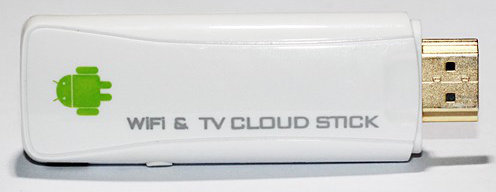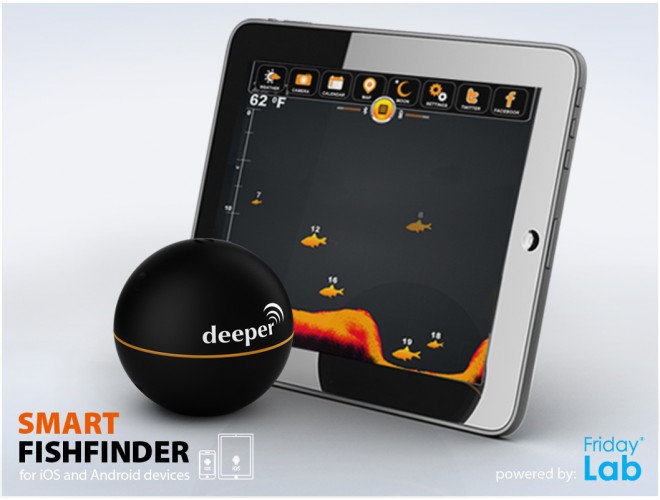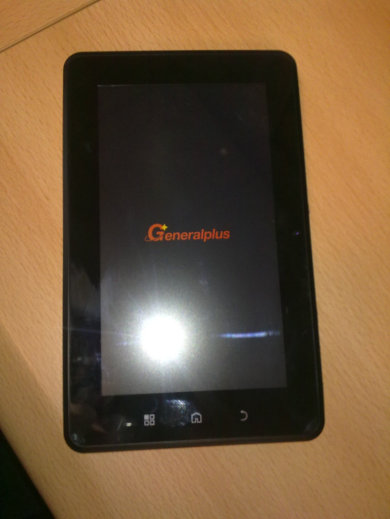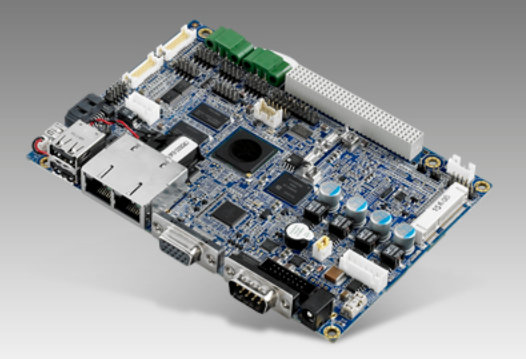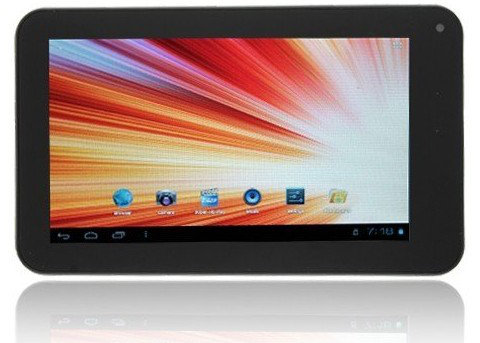togetho.ru is a an online community that organizes group buys for interesting gadgets, and one reader informed me they already did successful group buying for mobile devices such as Hyundai A7HD, SmartQ Ten3, and Freelander PD10 tablets and ThL V9 smartphone. They now opened group-buying subscription for CX-01 Android 4.0 mini PC powered by a dual core Cortex A5 processor (Telechips TCC8923) and plan to offer the device for $39.99 including international shipping via China Mail. It’s also possible to upgrade to Hong Kong Post or other shipping methods. You do not actually buy via togetho.ru, but you just need to register an email address, and if there is enough demand, they will be able to send a coupon to your email so that you can use it in Pandawill. The CX-01 HDMI stick should have performance similar to MK802 based on Antutu benchmarks for devices built around TCC8923, especially […]
Mele A1000/A2000 Android 4.0 Image Released
At last, a (semi-)official Android 4.0 release (and not a beta) for Mele A1000 and Mele A2000 media players has been released. This release is based on AllWinner Android 4.0 SDK. You can download homlet_4.0_v1.0_20120609_dd.img.lzma or here and dump it to the SD card with dd (Linux) and Win32DiskImager (Windows). It is also available via Bittorrent. There is also another image named homlet_4.0_v1.0_20120609.img.lzma that can be flashed via the Phoenix Utility, but the download link is not available anymore at the moment. Here are the instructions in Linux:
|
1 2 3 4 |
wget http://www.lundman.net/ftp/mele/homlet_4.0_v1.0_20120609_dd.img.lzma 7z x homlet_4.0_v1.0_20120609_dd.img.lzma sudo dd if=homlet_4.0_v1.0_20120609_dd.img of=/dev/sdX bs=1M sync |
Where you need to replace X in /dev/sdX by the correct letter for your SD card reader. Now insert the SD card in your Mele, and wait until the LED stops blinking, remove the SD card and restart the device. Et voila! The default language is Chinese, so you’ll have to go to the Settings to change the language to your […]
Deeper Smart FishFinder: A Sonar For Android and iOS Mobile Devices
Friday Lab has designed and developed Deeper Smart Fishfinder, a Sonar that communicates with your smartphone or tablet via Bluetooth in order to help you locate the best location for fishing (i.e. where the fish are…). Deeper works with Android 2.2 or greater devices as well as iPhones and iPADs running iOS 4.0 or greater. The device, about the size of a tennis ball, is made of high-impact polycarbonate shell. This smart sonar is waterproof and can handle small shocks. You can use the Deeper for up to 6 hours on a battery charge and Bluetooth range is up to 50 meters. You’ll be able to see the bed of the pond, lake or river on your device, know where and how big the fish are as well as the temperature and depth of water. You can watch the video to see how the device was designed and how it […]
52.99 USD CX-01 Mini Android 4.0 TV Box Powered by TeleChips TCC8925 (Cortex A5)
If you thought the 74 USD MK802 Android mini PC was cheap, think again. One of my reader informed me that Pandawill started selling a similar product for 52.99 USD (inc shipping). The “CS-01 Mini Android TV Box” features a Telechips TCC8923 dual TCC8925 Cortex A5 processor clocked at 1 GHz 800 MHz with 512 MB RAM and 4GB NAND Flash, and runs Android 4.0.4. Here are the specifications of the device: SoC – Telechips TCC8923 (dual core Cortex A5) TCC8925 @ 1GHz 800 MHz with Mali-400 GPU System Memory – 512MB RAM Storage – 4GB NAND flash Video output – HDMI (Up to 1080p60) Video formats – AVI, RMVB, MKV & FLV (1080P) Audio formats – MP3, WMA, WAV, APE, AAC, FLAC, OGG Connectivity – Wi-Fi 802.11 b/g/n USB – 1 x USB 2.0 port + 1 x micro USB port Dimensions – 90 x 40 x 29mm Weight […]
GeneralPlus GP3300 Cortex A8 Processor and Android Tablet Reference Design
I’ve recently come across Eken D70 Tablet which is a typical 7″ Android ICS tablet, except it’s product description shows a Cortex A8 chip called GP33003. After some research, I found that this chipset is provided by GeneralPlus (previously part of Sunplus). GP3300x application processor features a cortex A8 clocked at 1 GHz together with a PowerVR SGX531 GPU, and comes in 216pins LQFP package. This SoC integrates LVDS and HDMI, and the company told me that the GP33XX targets “higher resolution displays, but still keep the lower PCB cost, compared to its current competitors”. It also features an hardware video decoder and encoder (up to 1080p), and can handle a 720p full-duplex video conference. That’s about all the information I could get about the SoC itself. I’ll update this post If I find out more. The company also provides a tablet reference design (GP3300xA Tablet) with the following specifications: […]
Advantech RSB-4210: Freescale i.MX53 Single Board Computer
Advantech has just launched the RSB-4210, a fanless and heatsink-less RISC Single Board (RSB) powered by Freescale i.MX53 (Cortex A8) with 512 MB DDR3 and 2 GB NAND Flash. This board can operate in industrial temperature range (-40 to 85° C) and targets industrial control, digital signage, HMI/kiosk, medical, and portable applications. Here are the key features of this board: Freescale ARMCortex-A8 i.MX536 @ 800MHz Supports OpenGL ES 2.0 and OpenVG 1.1 hardware accelerators Supports full HD 1080p video decode and HD 720p hardware video encode Video Output LCD support with resolution up to 1920×1080 (default 800×480) via LVDS connector HDMI VGA Touch, UART, I2C, I2S, SPI, GPIO, USB Supports SATA storage interface and CAN-bus for vehicle applications Dimensions – 146 x 102 x 20 mm Power – 9 ~ 24 V DC with 3-watt power consumption Operating temperature – -40 ~ 85° C If you don’t mind about the […]
Linaro Android Puts Stock Android To Shame on TI Pandaboard (OMAP4430)
The team at Linaro has done an amazing job at optimizing Android 4.0 for ARM and Bernhard Rosenkränzer, Android Engineer at Linaro among other things, has put all those optimizations together to showcase a demo at Linaro Connect Q2.2012 in Hong Kong with 2 pandaboards: One running Stock Android 4.0.4, the one released by Google (AOSP) One running Linaro Android 4.0.4 Both hardware, android version and benchmark software (oxBench) are the same, and the results are quite amazing with Android Linaro achieving about 60 fps in all 0xBenchmark tests (OpenGL Cube, OpenGL Blending, OpenGL Fog and Flying Teapot) whereas Android stock achieving 30 fps. They selected a benchmark tool that is mainly CPU bound, as they cannot optimize the GPU code since they can only access binary blobs. Apparently, most of the improvements were possible thanks to toolchain and code optimization (to be able to build) such as using gcc […]
UGoos UG-LMW70 – 72 USD Android 4.0 7″ Touchscreen Tablet Powered By VIA WM8850 (Cortex A9) Processor
Back in January, VIA announced the WonderMedia Prizm WM8950 processor featuring a Cortex A9 processor @ 800 Mhz with a Mali-400 GPU, but recently I have seen a few tablets with the WM8850, the little (or rather the big) brother of WM8950, with the same Cortex A9 but cadenced at 1.2 GHz and Mali-400 GPU. VIA has apparently not officially announced this new processor, and details are not available on Wondermedia website yet, but the WM8850 targets the same markets as AllWinner A10/A13 Cortex A8 processors and is said to be competitive in price. And it must be competitive, because I just found an Android ICS tablet based on WM8850 for $72 US (including shipping) on aliexpress (UGoos UG-LMW70) with the following specifications: CPU – Via Wondermedia WM8850 Cortex A9 @ 1.2GHz + Mali-400 GPU Memory – 512MB RAM Storage – 4GB NAND FLASH + microSD card slot (Up to […]


